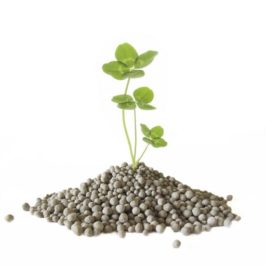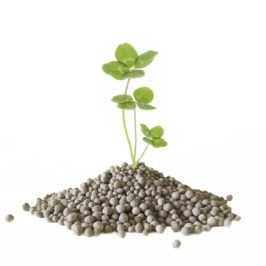Continued from 17 August 2015
Previously I’ve discussed the natural P sources, (RPR’s and Guanos), as well as high analysis sources of P, (Super, DAP etc.).
A further option is to apply “Reverted Super” or “Di-calcic Phosphate”. These products are manufactured by combining Super phosphate, (typically 9%P), with limestone and water. Because the Super is acidic and the limestone is alkaline, when water is added a chemical reaction takes place. Simplified, this reaction does three things, (1) It neutralises the acidity of the Super, (2) It drives off the limestone’s Carbonate content, and (3) It adds an atom of Calcium to the phosphate that was in the super. The outcomes are; (a) The soluble P that was in the Super is now insoluble, (b) The carbonate in the limestone has been removed so it can no longer raise soil pH unless additional limestone is included, (c) The Sulphur in the Super combines with calcium to create Calcium sulphate, (Gypsum), and (d), The final product has typically been reduced to 4%P.
How much Phosphorous, (P), leaves the farm? If you add up the total kg of animals and animal products that leave the farm each year and then divide that figure by the farms effective ha, it is easy to find the farms total animal production in kg/ha/pa. Considering that all mammals have a total P content of less than 0.7%, for a sheep and beef farm multiplying the farm production kg/ha/pa result by 0.7% gives the P/kg/ha leaving the farm. Surprisingly, this will typically be less than 3kg/ha/ pa. When deciding on a P application rate, an allowance should also be made for the P that is transferred from grazed pasture to stock camp areas via animal dung. Areas used for cut and carry hay or crop production should be considered separately as P is removed and transferred elsewhere.
So far in this series I’ve presented Phosphorous facts, I’ll now move to my own beliefs and opinions. One of my early business mentors described management as “making a continuous stream of decisions” and I believe that this also applies to farming. Any decision requires information to base it on and the more information the decision is based on the more chance that it will be correct. The factor that usually limits the quantity and quality of the information available is time. At one extreme snap decisions must be made and at other extreme several years may be available.
When it comes to making P fertiliser recommendations, I prefer to have at hand at least ‘Olsen P’ and ‘Total P’ soil test results as well as ‘Pasture P” test results. I believe that using only one of these tests can be likened to making a snap decision. When it comes to choosing a source of P, because of the non-acidic, non-leaching yet.. readily plant available characteristics, my preference is an ultra-fine particle, low Cadmium, low Fluoride RPR or Guano combined with Sulphur.
Andrew de Lautour. PFP Fertilisers Ltd. ©
For further information or a sample pack phone us on (06) 8585235


